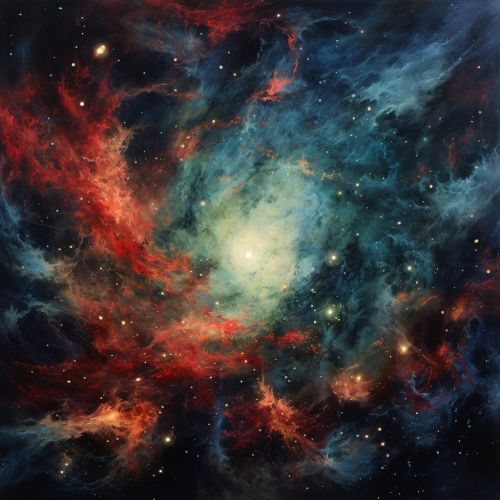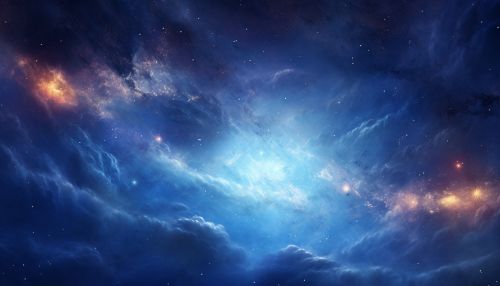Galaxy formation and evolution
Overview
The formation and evolution of galaxies is a complex process that has been the subject of extensive study in the field of astronomy. This process involves the gravitational interactions of matter, the effects of dark matter, and the influence of cosmic microwave background radiation. The study of galaxy formation and evolution is a key component in our understanding of the universe's history, structure, and future.
Galaxy Formation
The formation of galaxies is believed to have begun approximately 13.8 billion years ago, shortly after the Big Bang. The initial conditions of the universe, including the distribution of dark matter, played a crucial role in the formation of galaxies.
Primordial Fluctuations
Following the Big Bang, the universe was filled with a hot, dense plasma of electrons and protons. This plasma was not evenly distributed, and these primordial fluctuations in density are believed to be the seeds of galaxy formation. These fluctuations are observable today as tiny variations in the temperature of the cosmic microwave background radiation.
Dark Matter and Galaxy Formation
Dark matter, which makes up about 85% of the matter in the universe, played a significant role in galaxy formation. The gravitational influence of dark matter caused it to clump together, forming a cosmic web of dark matter halos. These halos served as the gravitational wells into which ordinary matter fell, leading to the formation of galaxies.
Gas Cooling and Star Formation
The gas within these dark matter halos began to cool and condense, forming stars and eventually galaxies. This process, known as star formation, is still ongoing in many galaxies today. The rate of star formation in a galaxy is closely linked to its mass, with more massive galaxies forming stars more rapidly.


Galaxy Evolution
Once a galaxy has formed, it continues to evolve over time. This evolution is driven by a variety of processes, including star formation and supernova explosions, interactions with other galaxies, and the influence of supermassive black holes.
Star Formation and Supernova Explosions
The life cycle of stars plays a key role in the evolution of galaxies. Massive stars end their lives in spectacular supernova explosions, which distribute heavy elements into the interstellar medium. These elements are then incorporated into the next generation of stars and planets.
Galaxy Interactions
Galaxies are not isolated entities, but rather exist in a cosmic web of matter. They interact with each other through gravity, leading to galaxy mergers and interactions that can trigger bursts of star formation and reshape the structure of the galaxies.
Supermassive Black Holes
At the center of most galaxies, there is a supermassive black hole. These black holes can have a significant impact on their host galaxies, particularly through the energy released by accretion of matter onto the black hole.
Future of Galaxy Evolution
The future of galaxy evolution is a topic of ongoing research. Current theories suggest that galaxies will continue to evolve, with star formation gradually slowing down as the supply of gas is used up. Eventually, galaxies may become dominated by old, red stars, and their structure may change as they interact with other galaxies and the dark matter halos in which they reside.
